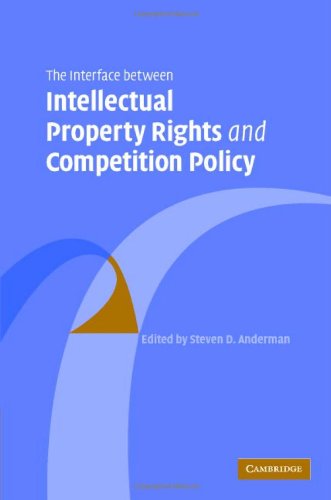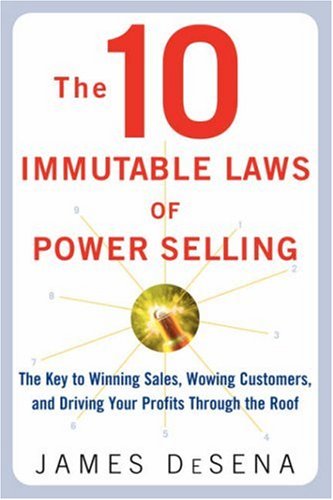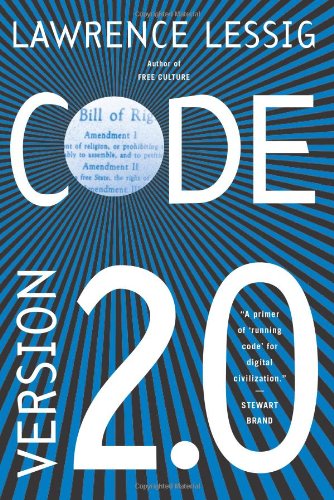Steven D. Anderman0521863163, 9780521863162, 9780511275456
Table of contents :
Cover……Page 1
Half-title……Page 3
Title……Page 5
Copyright……Page 6
Contents……Page 7
Notes on Contributors……Page 9
Preface……Page 13
I. Introduction……Page 15
II. A note on the compatibilities between the two systems of legal regulation……Page 19
III. The changing nature of the interface between the exercise of IPRs and competition policy in the major competition law systems……Page 21
A. Patent laws……Page 26
B. Copyright laws……Page 30
C. The limits of the patent and copyright internal balance……Page 33
Notes……Page 38
PART I Intellectual property rights and competition law in the major trading blocks……Page 49
I. Introduction……Page 51
A. Introduction……Page 53
1. The determination of the relevant market……Page 55
2. The concept of dominance under Article 82 and IPRs……Page 58
1. The concept generally……Page 60
2. Excessive pricing and IPRs……Page 63
3. The abuse of refusal to supply: Article 82(b)……Page 68
4. Tie-ins (Article 82(d))……Page 86
1. Introduction……Page 90
2. Exemption under Article 81(3)……Page 93
A. Introduction and background……Page 95
B. The evolution of the regulatory framework for IP licensing in the EC……Page 96
C. The main features of the new Technology Transfer Regulation and Guidelines……Page 99
1. The scope and duration of the Regulation……Page 101
2. The distinction between ‘horizontal’ and ‘vertical’ licensing agreements……Page 102
3. The market share limits……Page 103
4. The hard core restrictions……Page 104
5. The new methods of assessing individual restraints in licensing agreements outside the safe harbour of the TTBER……Page 106
6. Licensing agreements between non-competitors……Page 109
7. Licensing agreements between competitors……Page 113
A. Article 82……Page 114
B. Article 81……Page 117
C. Mergers……Page 119
VI. Conclusion……Page 121
Notes……Page 123
Introduction: innovation and competition……Page 139
A. The purposes of intellectual property rights……Page 140
B. Constitutional origins: copyright and patent protection……Page 142
1. Patent protection and competition policy……Page 143
2. Copyright protection and competition policy……Page 158
C. Common law origins: trademarks and trade secrets……Page 167
1. Trade secrets and competition policy……Page 168
2. Competition policy and protection of trade marks and trade names……Page 174
A. Antitrust economics……Page 185
B. The antitrust statutes in historical context……Page 191
C. Judicial interpretation of the statutes……Page 193
D. The regulatory agencies……Page 198
E. Agency guidelines……Page 199
A note on extra-territorial reach……Page 201
III. The impact of antitrust on intellectual property rights……Page 202
1. The courts: antitrust scrutiny of intellectual property rights……Page 204
2. Guidelines for the licensing of intellectual property (1995)……Page 206
1. Enforcement of intellectual property rights……Page 207
2. Industry standardisation……Page 209
3. Duty to license……Page 214
4. Licensing of intellectual property……Page 217
5. Unilateral acquisition of intellectual property rights……Page 231
Appendix A: an overview of the Microsoft antitrust cases……Page 235
Notes……Page 238
1. Industrial property and economic development……Page 264
2. Purpose of industrial property laws……Page 265
2. Purpose and Outline of the Antimonopoly Act……Page 266
1. The provision……Page 267
2. The position of the legislature and the Fair Trade Commission……Page 268
1. General remarks……Page 273
2. Doctrinal approach on restrictions on patent and know-how licensing agreements……Page 274
3. FTC Guidelines for Patent and Know-how Licensing Agreements……Page 275
C. Guidelines of the Fair Trade Commission in research and development……Page 278
D. Patent pools and cross-licensing schemes……Page 279
1. Overview……Page 281
3. Post-contractual limitations……Page 282
4. Restrictions in cross-licensing schemes……Page 283
1. In general……Page 284
2. Report of the study group on technical standards and competition policy, July 2001……Page 285
5. Study group on digital content and competition policy, March 2003……Page 286
A. Copyrights, rental and lending of phonograms……Page 287
B. Protection of investment by prohibiting slavish imitation……Page 288
C. Compulsory licences for dependent inventions……Page 290
1. Clinical trials and generic drugs……Page 291
3. The retail of software video games……Page 293
4. Unjustified threats for alleged infringement of intellectual property rights……Page 294
2. Restrictions on export……Page 296
5. Obligations to use the licensed technology……Page 297
2. Court decisions……Page 298
2. Court decisions……Page 305
1. Legislation……Page 312
2. Court decisions……Page 313
E. Antitrust law……Page 315
2. Patent rights……Page 316
Notes……Page 317
PART II Intellectual property rights and competition law in smaller and medium sized open economies……Page 327
B. Compulsory licensing……Page 329
1. Patents……Page 330
C. Parallel importation……Page 331
A. Scheme of the Australian Trade Practices Act……Page 332
Section 51(3)……Page 333
Limitations of section 51(3)……Page 334
‘Relates to’……Page 336
A. National Competition Council (1999)……Page 338
B. Intellectual Property and Competition Review Committee (2000)……Page 339
1. Effect of IPCRC recommendation – the lessening of competition test……Page 341
C. Government’s response to IPCRC recommendation……Page 343
A. Preliminary observations……Page 344
C. Refusal to license……Page 345
High fees……Page 347
E. Acquisition……Page 348
F. Collective licensing……Page 349
G. Joint research and development……Page 350
2. Restrictions that carve up the property and/or give the licensee exclusivity……Page 351
4. Tying and bundling……Page 353
B. The utility of guidelines depends on why? who? how?……Page 355
Notes……Page 356
A. Introduction……Page 362
B. The constitutional context……Page 363
C. EC competition law and Irish competition law……Page 364
1. The prohibitions……Page 366
2. Mergers……Page 367
3. Institutions……Page 368
A. The constitutional and EC context……Page 370
B. Authority decisions……Page 371
1. Exclusivity……Page 372
3. Mergers and sale of business……Page 373
4. Vertical agreements……Page 374
5. Collecting societies……Page 375
III. Conclusion……Page 379
Notes……Page 380
I. Overview: IP and competition laws within the Singapore legal framework……Page 389
II. Exogenous vs. endogenous limits placed on the exercise of intellectual property rights……Page 391
III. Copyright law in Singapore……Page 393
A. Copyright law – the fair dealing defence……Page 394
B. Copyright law – defences for copyright infringement of artistic works……Page 396
C. Copyright law – parallel imports……Page 398
IV. Patent law in Singapore……Page 400
A. Patent law – claims, specifications and infringement by variants……Page 401
C. Patent law – pharmaceutical products……Page 403
D. Patent law – preventing abuse of the patent monopoly……Page 404
E. Patent law – compulsory licences……Page 406
V. Trade mark law in Singapore……Page 407
A. Trade mark law – registration criteria and protectable subject matter……Page 409
B. Trade mark law – defences to infringement……Page 411
C. Trade mark law – parallel imports……Page 413
VI. Competition law in Singapore……Page 414
A. The CCS Guideline on the Treatment of Intellectual Property Rights……Page 416
B. Anticompetitive agreements under the Competition Act……Page 417
C. Abuse of a dominant position under the Competition Act……Page 421
VII. Looking ahead: developing the intellectual property–competition law interface in Singapore……Page 424
Notes……Page 425
PART III Issues related to the interface between intellectual property rights and competition law……Page 441
8 Parallel imports……Page 443
International treaty obligations over parallel imports……Page 445
1. Intellectual property owners and local distributors……Page 446
2. Consumers……Page 449
B. How are parallel imports treated in different jurisdictions?……Page 451
1. Singapore……Page 452
2. United States of America……Page 455
3. European Economic Area and European Union……Page 459
4. Malaysia……Page 462
5. Japan……Page 463
6. Hong Kong……Page 464
8. Australia……Page 465
9. New Zealand……Page 467
C. Parallel importation of digital works……Page 468
Conclusion……Page 469
Notes……Page 472
I. Introduction……Page 480
II. The position of developing countries……Page 481
A. Acquisition of skills and know-how……Page 482
B. Access to document-embodied knowledge……Page 484
C. Acquisition by importation and business partnerships……Page 485
1. FDI……Page 486
2. Spillover……Page 491
III. Unbundling the IPR package……Page 492
IV. Technology transfer at the multilateral level……Page 496
V. International investment agreements and technology transfer……Page 500
VI. Recommendations going forward……Page 501
Notes……Page 506
Introduction……Page 519
A. Property rights and efficiency……Page 520
1. Efficiency……Page 521
2. Property Rights……Page 522
B. Application to IPRs……Page 524
1. Patents……Page 525
2. Copyrights……Page 531
3. Trade marks……Page 533
A. Introduction……Page 535
B. The argument for independence……Page 536
C. Applications and specific issues……Page 539
1. Patents……Page 540
2. Copyrights……Page 555
3. Trade marks……Page 557
Notes……Page 559
Index……Page 567







Reviews
There are no reviews yet.